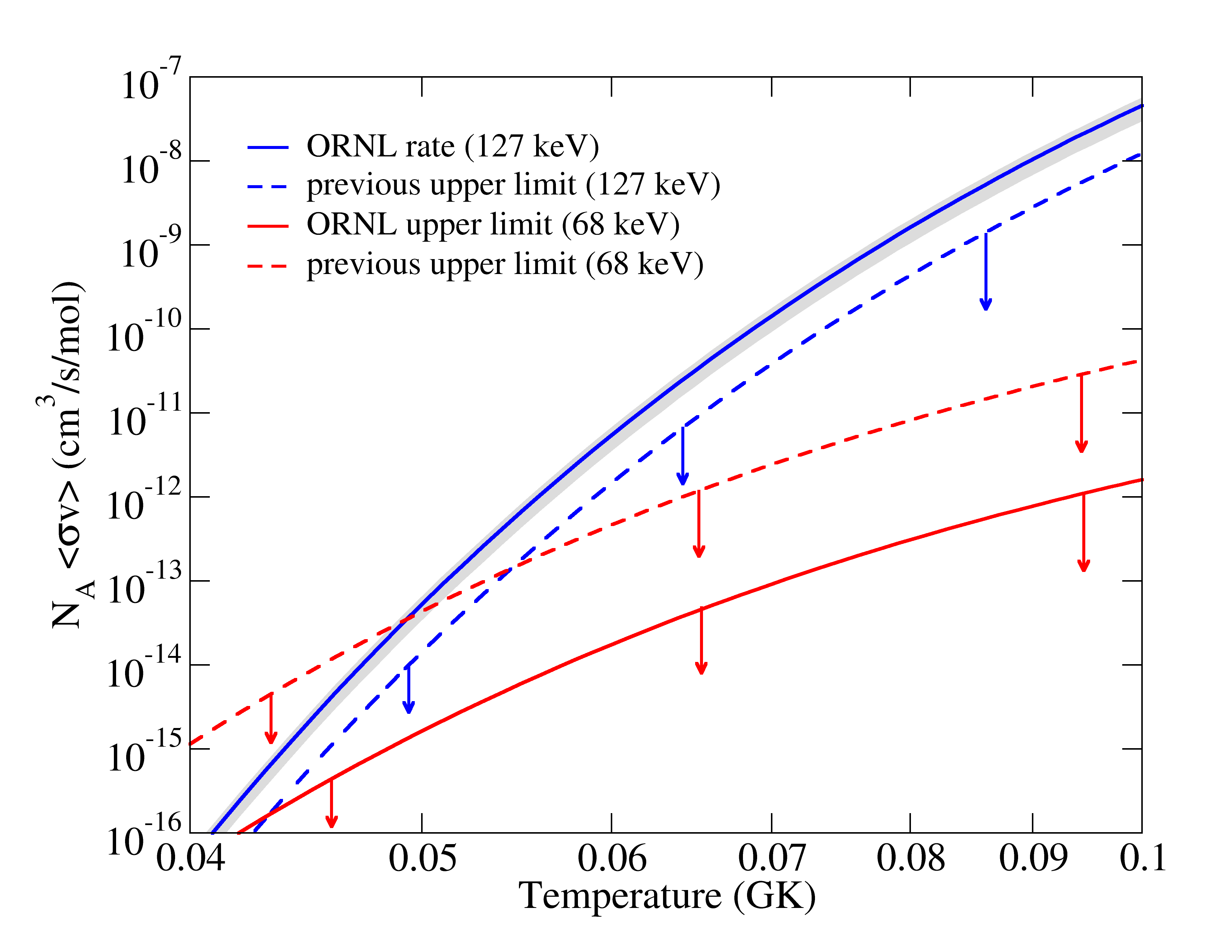
Constraint of the Astrophysical 26gAl(p,γ)27Si Destruction Rate at Stellar Temperatures
S.D. Pain et al., Phys. Rev. Lett 114, 212501
The Galactic 1.809-MeV γ-ray signature from the β decay of 26gAl is a dominant target of γ-ray astronomy, of which a significant component is understood to originate from massive stars. The 26gAl(p,γ)27Si reaction is a major destruction pathway for 26gAl at stellar temperatures, but the reaction rate is poorly constrained due to uncertainties in the strengths of low-lying resonances in 27Si. The 26gAl(d,p)27Al reaction has been employed in inverse kinematics to determine the spectroscopic factors, and hence resonance strengths, of proton resonances in 27Si via mirror symmetry. The strength of the 127-keV resonance is found to be a factor of 4 higher than the previously adopted upper limit, and the upper limit for the 68-keV resonance has been reduced by an order of magnitude, considerably constraining the 26gAl destruction rate at stellar temperatures.


